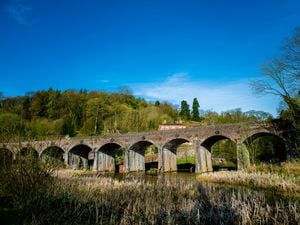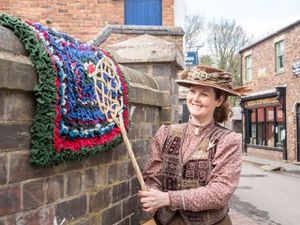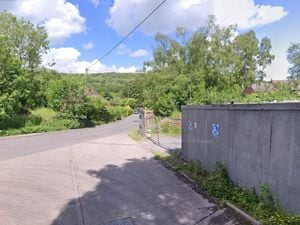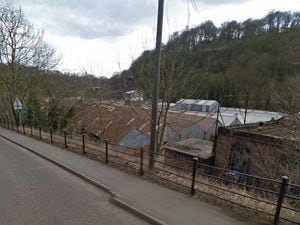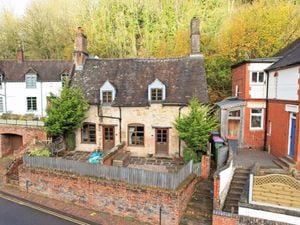Crowds and BBC One Show gather to mark end of work on Iron Bridge
It has been cleaned up, repaired, restored – and has even changed colour – but now the work on the world famous Iron Bridge has finally finished.
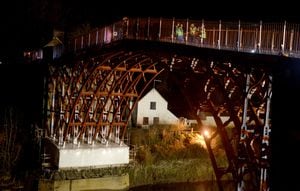
Crowds of children and their proud families gathered in Ironbridge to mark the end of the work on Monday evening, with the occasion broadcast live on the BBC’s One Show.
Cutting the ribbon and officially reopening the bridge was Michael Darby, great great great grandson of Abraham Darby III, who built the cast iron bridge in 1779.
WATCH: Iron Bridge reopened after work
A meticulous programme of repair work, which included bespoke replacements for hundreds of iron wedges that hold the structure together, has finished after more than a year that saw the much-loved landmark covered in sheets of white plastic for much of 2018.
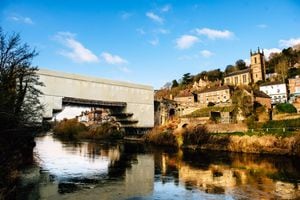
Kate Mavor, English Heritage’s chief executive, said: “Caring for an internationally significant historic structure such as the Iron Bridge is at the heart of English Heritage’s charitable purpose.
“The Iron Bridge was revolutionary when it was built, it has long been copied but it could never be replaced – so it was vital for us to undertake this major project to conserve it for future generations.
"We know how much the Iron Bridge means to people near and far, whether as the cradle of the Industrial Revolution, the spot for a romantic proposal, a memorable holiday, or just the view from the window every day.”
“As a charity we’re committed to securing the bridge’s future and we’re extremely grateful for the support and hard work of everyone who has played a part.”
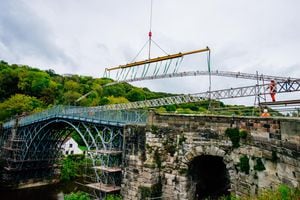
And while the work on restoring the bridge is done, it is not the end of revitalising the landmark for a new generation.
Work is under way to replace the current lighting system, which has been branded unfit for purpose.
A planned 33 new floodlights will surround the bridge, if permission is given. The Iron Bridge will be lit with warm white LEDs during the week and at weekends will be turned a fiery “furnace” colour.
Councillor Raj Mehta, mayor of Telford & Wrekin, said: “It’s a World Heritage Site on our doorstep and now it’s looking better than ever. It’s amazing to have so many people, especially all the children, here to celebrate the opening of this magnificent bridge.
“I think it looks incredibly beautiful, and it has already received wonderful comments from visitors from near and afar.”
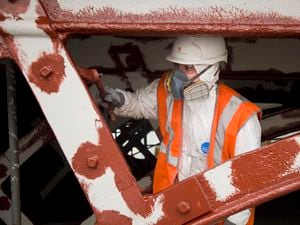
Councillor Nicola Lowery, borough councillor for the Ironbridge Gorge said: “The atmosphere at the Iron Bridge was electric and it’s incredible to see the amount of families that have attended to mark the completion of this historic project.
"The Ironbridge Conservation Project has successfully preserved the bridge for generations – and now the Iron Bridge and the wonders of the Gorge will be broadcast to the nation”.
When it was finished in 1779 the Iron Bridge was the first single-span arch bridge in the world to be made of cast iron and was a turning point in British engineering – it is the great-great grandfather of today’s railways and skyscrapers.
However investigations showed that it was under threat from cracking due to stresses in the ironwork dating from the original construction, ground movement over the centuries, and an earthquake in the 19th century.
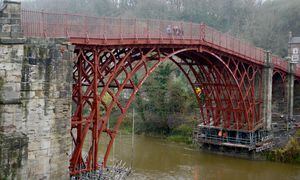
The bridge was in urgent need of repair, so in late 2017 English Heritage started work to save this masterpiece of engineering.
The whole of the bridge’s elaborate structure has now been cleaned, conserved and repaired, from the iron radials and braces holding the bridge together to the deck plates and wedges, as well as the main iron arch itself.
The project has also seen the bridge returned to its original colour for the first time, after samples of the earliest paintwork were discovered during the conservation process.
The dark red-brown paintwork is the same colour as depicted in William Williams’ 1780 painting, Cast Iron Bridge near Coalbrookdale, one of the earliest depictions of the structure.
A team of six painters used more than 2,400 litres of paint to complete the works, using a similar paint system to that on the Forth Bridge.
A one million euro donation from the German Hermann Reemtsma Foundation and public support via English Heritage’s first crowd-funding campaign helped to fund the £3.6 million conservation project, the largest since English Heritage became a charity in 2015.

